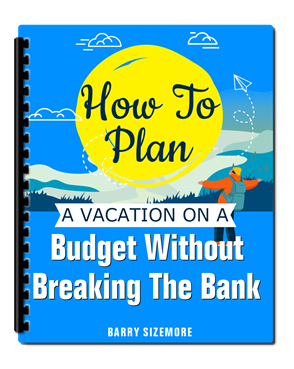Finding restful sleep while flying can feel elusive, especially with cramped spaces, cabin noise, and fluctuating temperatures.
However, with the right strategies, you can turn even the most challenging flight into an opportunity for quality rest.
If you're ready to transform your in-flight experience, read on to learn how you can sleep comfortably and arrive at your destination feeling refreshed.
1)) Choose The Right Seat
When booking your flight, selecting the right seat can make all the difference in achieving restful sleep.
Window seats are often the best choice as they give you something to lean on and prevent interruptions from other passengers needing to get in or out of the row.
Seats toward the front of the plane or over the wings tend to experience less turbulence, offering a smoother ride.
Avoid seats close to high-traffic areas, such as restrooms or galley spaces, as these can be noisy and disruptive.
By prioritizing your seating choice, you set the stage for a more comfortable and uninterrupted in-flight sleep.
2)) Invest In A Good Travel Pillow
A quality travel pillow is a game-changer when it comes to sleeping comfortably on a plane.
Unlike standard pillows, travel pillows are designed to support your neck and keep your head in a natural, upright position, which is crucial for avoiding aches and discomfort.
Look for pillows made with memory foam or offering adjustable support to suit your preferences.
Some designs are compact and easy to pack, ensuring convenience without sacrificing comfort.
With the right travel pillow, you can significantly enhance your ability to relax and enjoy restful sleep, no matter how long the flight.
3)) Wear Comfortable Clothing
Wearing comfortable clothing is essential for achieving quality sleep during a flight.
Pick loose, breathable fabrics like cotton or bamboo that allow for natural movement and help regulate body temperature.
Layering is also key, as cabin temperatures can fluctuate dramatically, so having a sweater or light jacket on hand ensures you're prepared for any changes.
Avoid restrictive or tight-fitting garments that could cause discomfort over time.
By dressing appropriately for the flight, you create a more relaxing environment that greatly improves your chances of drifting off peacefully.
4)) Use Noise-Cancelling Headphones Or Earplugs
Eliminating background noise is crucial for falling asleep on a plane, making noise-canceling headphones or earplugs indispensable travel essentials.
These tools effectively block out disturbances such as the hum of the engines, cabin announcements, or chatter from fellow passengers, allowing you to create a serene and quiet environment.
Noise-canceling headphones are ideal for listening to calming music, white noise, or guided meditations to further enhance relaxation.
Meanwhile, earplugs are a lightweight, compact option for those who prefer complete silence.
By using these sound-blocking solutions, you can enjoy a peaceful atmosphere that encourages deep, restful sleep throughout your flight.
5)) Bring An Eye Mask
An eye mask is a simple yet highly effective tool for promoting better sleep on a plane.
It blocks out ambient light from cabin windows, overhead lights, and screens, creating a darker environment that signals your body it's time to rest.
Look for masks with soft, breathable materials and an adjustable strap to ensure a snug but comfortable fit.
Some eye masks even come with added features like cushioned padding or cooling properties to enhance relaxation further.
By incorporating an eye mask into your travel essentials, you can create the perfect setting for falling asleep and waking up feeling more refreshed.
6)) Adjust Your Position For Optimal Comfort
Finding the best position for your body is vital for maximizing comfort and achieving restful sleep on a plane.
Recline your seat to reduce pressure on your spine, but be considerate of the passenger behind you.
Use a blanket or rolled-up sweater for lower back support to maintain proper posture.
Position your arms and legs in a relaxed state to avoid unnecessary tension or cramping.
For additional support, consider elevating your feet with a footrest or placing them on your carry-on bag.
By fine-tuning your position, you can create a more relaxing posture and set yourself up for a peaceful and rejuvenating in-flight rest.
7)) Stay Hydrated But Avoid Excessive Caffeine
Staying hydrated is essential for overall comfort and well-being during a flight, especially when aiming to get quality sleep.
The dry cabin air can quickly lead to dehydration, leaving you feeling fatigued and making it harder to rest.
Drink water regularly throughout the flight, but avoid consuming excessive caffeine, as it can disrupt your natural sleep cycle and increase restlessness.
Instead, pick soothing beverages like herbal tea to help you relax.
By keeping your hydration levels in check and limiting stimulants, you create a more balanced state that promotes relaxation and improves your chances of falling asleep comfortably.
8)) Follow A Pre-Flight Sleep Routine
Establishing a pre-flight sleep routine can significantly improve your ability to rest during the flight.
Begin by adjusting your schedule a few days in advance to align with the time zone of your destination.
Create a calming evening routine that may include activities like reading, meditating, or taking a warm shower to signal your body to wind down.
Avoid screen time before boarding to minimize exposure to blue light, which can interfere with your sleep cycle.
Incorporate relaxing practices, such as deep breathing or light stretching, to help release tension.
By preparing your body and mind with a structured pre-flight sleep routine, you set the stage for a more restorative in-flight rest.
9)) Utilize A Blanket Or Layer Up
Staying warm and comfortable is critical for achieving quality sleep on a plane, and having a blanket or layering up can make all the difference.
Airplane cabins are often kept at cooler temperatures, which can lead to discomfort if you're not prepared.
A soft, lightweight blanket is easy to pack and provides instant warmth. Wearing layers allows you to adjust to fluctuating cabin temperatures effortlessly.
Select breathable fabrics that feel cozy against your skin, such as cotton or fleece.
By ensuring you have sufficient warmth through a blanket or strategic layering, you can maintain a more restful state and drift off more easily during your flight.
10)) Book A Red-Eye Flight When Possible
Choosing a red-eye flight can be a strategic move for maximizing sleep during air travel.
These overnight flights align with your natural circadian rhythm, making it easier to fall asleep while in the air.
The cabin is typically quieter and darker, with fewer interruptions from crew announcements or passengers walking through the aisles.
Packing sleep essentials like an eye mask and noise-canceling headphones can further enhance your rest during the flight.
By booking a red-eye itinerary, you can arrive at your destination feeling more refreshed and ready to start your day.
Conclusion
Achieving restful sleep on a plane may seem challenging, but with thoughtful preparation and the right strategies, it’s entirely possible.
By combining practical tips like adjusting your position, staying hydrated, and establishing a pre-flight routine, you create an environment that supports relaxation and rest.
Adding essentials such as an eye mask, a blanket, or noise-canceling headphones further elevates your travel experience, helping you manage the unique challenges of in-flight sleep.
Whether you’re traveling for business or leisure, these steps can ensure you arrive feeling rejuvenated and ready to make the most of your destination.
Download Our Free E-book!







